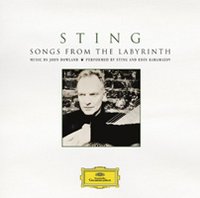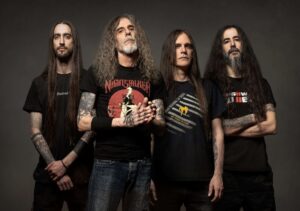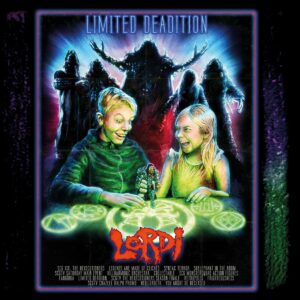CD + DVD Anniversary Edition of Sting’s first DG album

STING & EDIN KARAMAZOV: Songs from the Labyrinth
Dowland Anniversary Edition
CD + DVD
INTERNATIONAL RELEASE DATE: 16 AUGUST 2013
· Sting’s stunning Dowland album, the most intriguing classical disc of 2006, sold nearly 800,000 copies.
· In this year of the 450th anniversary of John Dowland’s birth, DG presents a special edition, bringing together for the first time all of the audio recordings and video material in a single package.
· THE CD comprises the original album along with live versions of several of the songs performed at the St. Luke’s concert in London in 2007, plus the celebrated renditions of “Fields of Gold”, “Message In A Bottle” and “Hellhound On My Trail” that brought the house down.
· THE DVD “The Journey and the Labyrinth”, an original television special, weaves captivating performances, interviews, historical information and readings of Dowland’s personal correspondence that serve as a soundtrack to the composer’s life. It also includes live material from St. Luke’s Church in London, where Sting performs selection from the original album, as well as adaptations of his most famous hits.
DVD BONUS FEATURES:
· Behind the scenes rehearsal from St. Luke’s performance, including “Message In A Bottle”
· St. Luke’s concerette including “Fields Of Gold”
· Edin Karamazov solo
DELUXE ARTWORK & PACKAGING
· Based on the original album artwork, the rigid slipcase encloses two mintpacks whose design emphasizes the labyrinth motif
· The 40-page booklet in English includes Sting’s original album notes plus a newly commissioned article by English journalist Adam Sweeting:
“It’s all about development”
One of Sting’s most artistically gratifying projects was Songs from the Labyrinth, which grew out of his study of composer John Dowland and his Elizabethan milieu. The album, and accompanying live performances, awakened an undreamt-of level of interest in Dowland’s music. The disc hit the top of the classical charts, but also managed the rare feat for a classical album of reaching number 25 on the US Billboard 200 and number 24 on the UK pop charts, while selling strongly across Europe. Sting may have brought Dowland to more listeners with this one project than all previous Dowland releases combined.
Sting’s proposition was that despite the fact that he lived 400 years ago, Dowland was a surprisingly modern artist who could, in some ways, remind us of the “alienated singer-songwriter” of our own times. It doesn’t take much of a leap of the imagination to hear echoes of Dowland’s poetically troubled spirit and even his musical structures in contemporary songwriters. Most importantly, thinking about Dowland in this way offered Sting a valid way to approach his work, freeing the material from its traditional academic associations.
Those listeners who were already aware of Dowland would have heard his music in versions by the English countertenor Alfred Deller, or by lutenist Julian Bream with the tenor Peter Pears, or in the recordings of the early music specialists David Munrow and Christopher Hogwood. In other words, Dowland’s music had been placed firmly within the “classical” or “early music” spheres, with their attendant rules and conventions.
Sting, intrigued by the Dowland compositions he had heard, wanted to find a way to illuminate the work of a great British artist of an earlier era by using his skills as a contemporary popular musician. This wasn’t a “crossover” version of Dowland watered down to appeal to a mass audience, but a way of interpreting Dowland’s music that could be considered as artistically valid as any other versions that preceded it.
Sting’s solution was to sing the songs in an English vernacular style pitched in an almost conversational way, in contrast to the less naturalistic medium of the countertenor voice (in his own album notes, Sting writes of the way Dowland’s music “lends itself to the proximity and whispering closeness of the modern microphone”). Whether it’s dancing among the bright, brisk rhythms of Come Again or navigating the solemn formality of Dowland’s powerful ode to melancholy, In Darkness Let Me Dwell, Sting’s voice is immediate and expressive, its slight huskiness lending an overlay of worldly-wise experience.
“Having listened to a lot of Dowland records, I thought that no-one was doing what I could do,” said Sting. “I don’t have that trained operatic voice, but this music was composed around 1600 and the bel canto style wasn’t invented until 100 years later. I imagine people would have sung without that technique.”
The fact that Dowland’s chosen instrument was the lute also helped to persuade Sting that this was a project he must pursue. It’s the obvious forerunner of the guitar and was the instrument of choice of the wandering minstrel of its era, as the guitar is the ubiquitous companion of pop and folk singers today. Sting is a capable guitar player, but his desire to broaden himself musically was piqued by the idea of tackling the different demands of the lute, with its mysterious tunings and strings arranged in pairs. “For me it’s all about development,” he said. “You improve by putting yourself at risk creatively or entering a milieu that may seem uncomfortable at first.”
Sting was wise enough to realise that he would not become a master lutenist overnight. His decision to recruit Bosnian lute virtuoso Edin Karamazov was what gave the project its necessary ballast of historical authenticity and sheer musical expertise. Karamazov, trained at the Schola Cantorum Basiliensis and a collaborator with the likes of the Hilliard Ensemble, the Orpheus Chamber Orchestra and the countertenor Andreas Scholl, is a superb accompanist, while his solo pieces on Songs from the Labyrinth sizzle with inventiveness and stunning dexterity.
The obvious musical bond between the two musicians lay at the root of the album’s success. An additional important ingredient was Sting’s decision to include spoken extracts from a letter Dowland wrote to Sir Robert Cecil, Queen Elizabeth’s Secretary of State, which suggest some of the personal and political concerns weighing on the composer’s mind. They helped to make the album feel like a developing personal story rather than a random selection of songs. As Gramophone magazine wrote of Sting’s achievement, “he and Karamazov manage to bring Dowland before the listener as a living, breathing person in a way more orthodox recordings often fail to do.”
Adam Sweeting
Source: EMI Music


